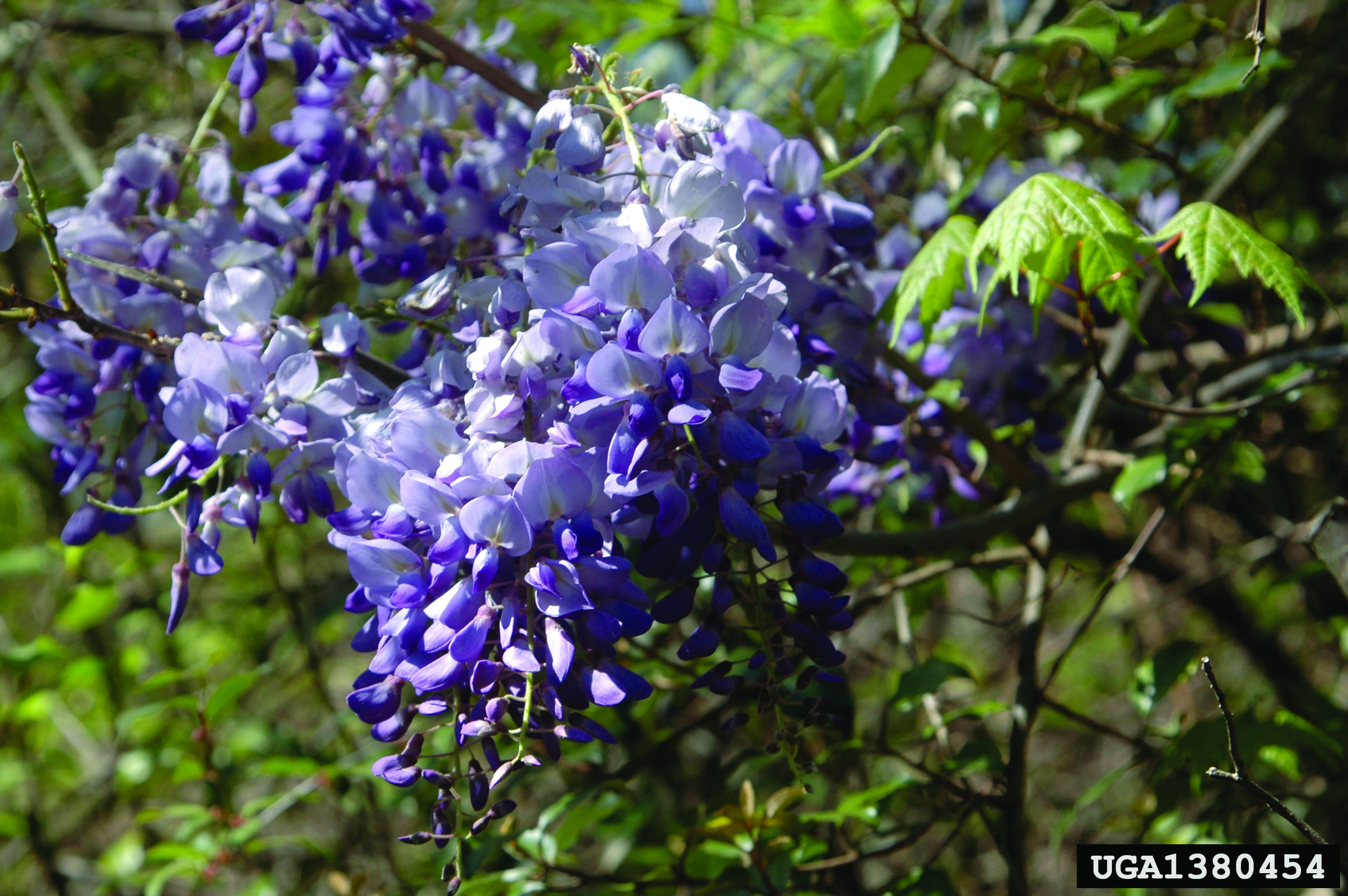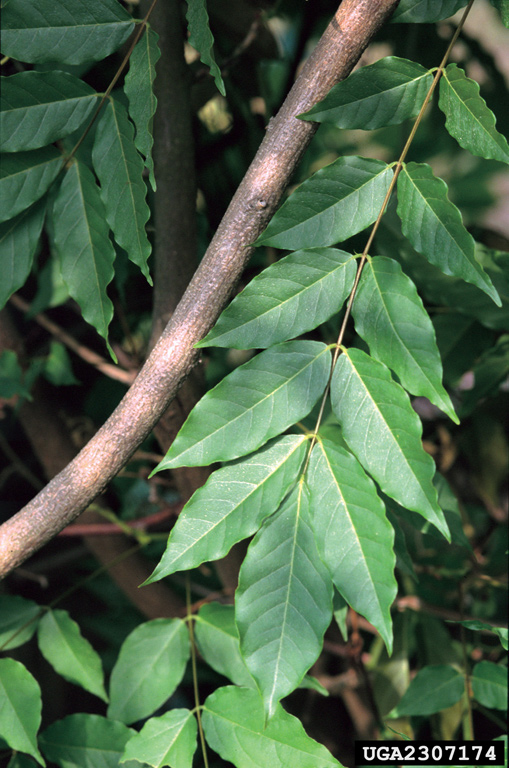Invasive Watch: Wisteria

The hard, woody vines of wisteria (Wisteria frutescens) plants wrap themselves tightly around tree trunks and branches, cutting through bark and causing host plant death by girdling. As girdled trees die, gaps in the vegetation area form, increasing the amount of sunlight reaching forest floors. This may give native and beneficial plant species a leg up, but it ultimately stimulates the vigorous growth and spread of wisteria and other problematic plants.
Wisteria vine stems are somewhat smooth with color varying from gray-brown to tan and growing up to 10 feet per growing season.
The plant’s flowers range from white to purple or violet-blue to blue. The one-half to 1 inch flowers are arranged in 6- to 12-inch-long dangling racemes. Nonnative wisterias can take up to 15 years to flower. Flowering begins in late March and continues through May. All three nonnative wisteria species open before the leaves fully develop.
In addition to featuring brightly colored flowers, the plant grows 4- to 6-inch-long velutinous pods that hold up to eight flat, round brown seeds that develop July through November. Seed pods are normally greenish brown or golden and often remain on the vine throughout fall and winter.

The plant’s flowers range from white to purple or violet-blue to blue. The one-half to 1 inch flowers are arranged in 6- to 12-inch-long dangling racemes.

Wisteria vine stems are somewhat smooth with color varying from gray-brown to tan and growing up to 10 feet per growing season. Donna R. Ellis, University of Connecticut, Bugwood.org
TerraVue® herbicide from Corteva Agriscience is proven to work harder than most other herbicides on the market today by controlling more than 140 broadleaf weeds and brush species, including wisteria. By offering the industry’s most favorable environmental profile, TerraVue herbicide offers application flexibility with on-label treatment options, including:
TerraVue herbicide can be applied exclusively, but the product’s chemistry also is tank-mix compatible with other herbicides, such as Vastlan® or Garlon® 4 Ultra herbicides from Corteva, which broadens the spectrum of control.
For more information about controlling other problematic plant species throughout roadsides, utility rights-of-way and other noncrop use sites, visit VMVistas.com.
Under normal field conditions, TerraVue® is nonvolatile. TerraVue has no grazing or haying restrictions for any class of livestock, including lactating dairy cows, horses (including lactating mares) and meat animals prior to slaughter. Label precautions apply to forage treated with TerraVue and to manure and urine from animals that have consumed treated forage. TerraVue and Vastlan are not registered for sale or use in all states. Contact your state pesticide regulatory agency to determine if a product is registered for sale or use in your state. Consult the label for full details. State restrictions on the sale and use of Garlon® 4 Ultra apply. Consult the label before purchase or use for full details. Always read and follow label directions.
For over 30 years, Vistas® has covered strategies, trends and stories from across the Vegetation Management industry.